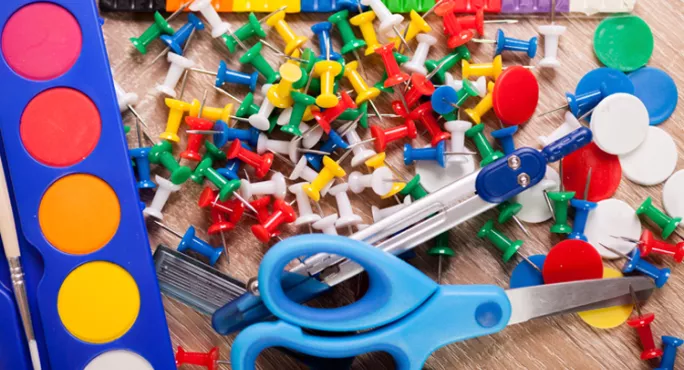Most teachers have a display style. Are you a minimalist? Or a conventionalist? Perhaps a bit of a surrealist?
My displays go for function, but with a touch of flamboyance. I like my displays to be interesting creations that my students can go up and touch and interact with. Often there will be parts that can be changed, and they take turns in updating the words or images in the display.
In February, I began crafting a new display. It was a word tree looking at “families” of words and included a bit of geography and history about their origins. I’d used examples of my students’ work. There was a tree made from pieces of felt and corded card. I’d bought stripy green string to make vines, and along the bottom, I was going to secure folders for the students to add their own contributions to the display.
And then lockdown happened.
My treasured display still sits in the boot of my car. Too tactile. Too interactive. Definitely not Covid-proof. My walls are currently bare as I update my classroom. But what can I use to engage my students without encouraging the spread of a deadly virus?
The government guidelines don’t explicitly rule out displays. They say: “Resources that are shared between classes or bubbles, such as sports, art and science equipment should be cleaned frequently and meticulously and always between bubbles, or rotated to allow them to be left unused and out of reach for a period of 48 hours (72 hours for plastics) between use by different bubbles.”
Clearly that means that interactive displays are out. But what would be sensible to put up on the walls instead? Here are my tips for making a display that is still engaging, but stays within the guidance.
1. Look but don’t touch
I think it’s clear that displays should not be interactive as this would encourage children to touch them and spread germs.
So in a bid to discourage this, I’m going to avoid using some of the fabrics and materials that I would normally pick to encourage my students to touch and interact with the display.
2. Give it a reason
Now, more than ever, we should be focussing everything onto the learning of our students. Yes, displays are a joy and having nice displays in your classroom can enhance your feelings of happiness. But there must be a balance.
I would say all of your displays should consist of relevant learning only and have a clear purpose. This is a good approach to have generally, not just during a pandemic.
3. Safe and secure
The problem with some displays is that you spend half your time fixing it back onto the wall. In normal times this is an annoyance, but with the coronavirus guidelines to follow, it becomes a hazard.
To avoid unnecessary touching of surfaces, make sure that all your displays are free from fiddly bits that easily fall down. Avoid things like sticky notes, or sticky tape to secure paper to the wall. Also, consider where the display is. If it is near a door that has a draft, then work can easily be swept off.
However, if you opt for the stapler, always ask the site manager where you can and can’t staple first.
4. Go digital
Sharing the work of your students brings them so much joy and pride, so it is imperative that we don’t lose this. If you’re now limited on wall space, try using the school web page as much as possible to upload children’s work.
5. Plastic fantastic
Laminated work can easily be wiped down to stop the spread of germs, and this will make it easier to keep your classroom clean.
However, laminating has an environmental impact, so it is worth keeping this in mind and only using it for things you want to keep in the future, too.
Niall Robinson-Fitzsimmons is a primary school teacher in Essex
